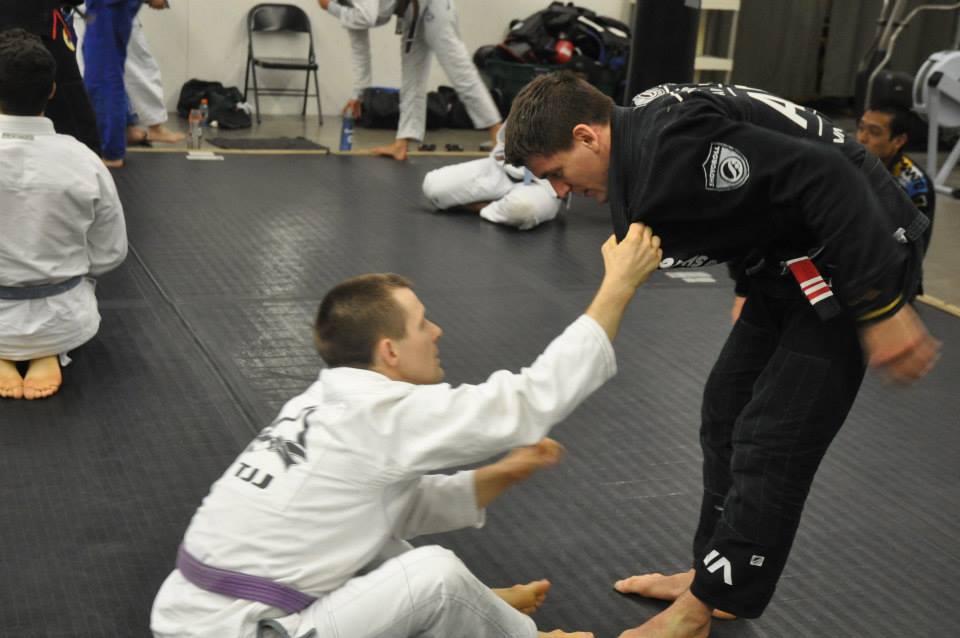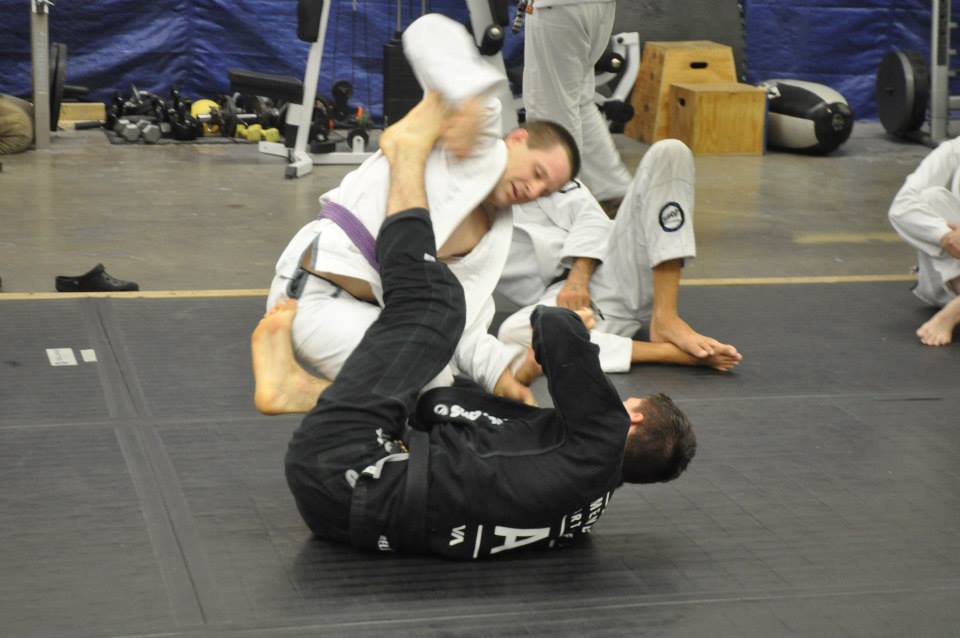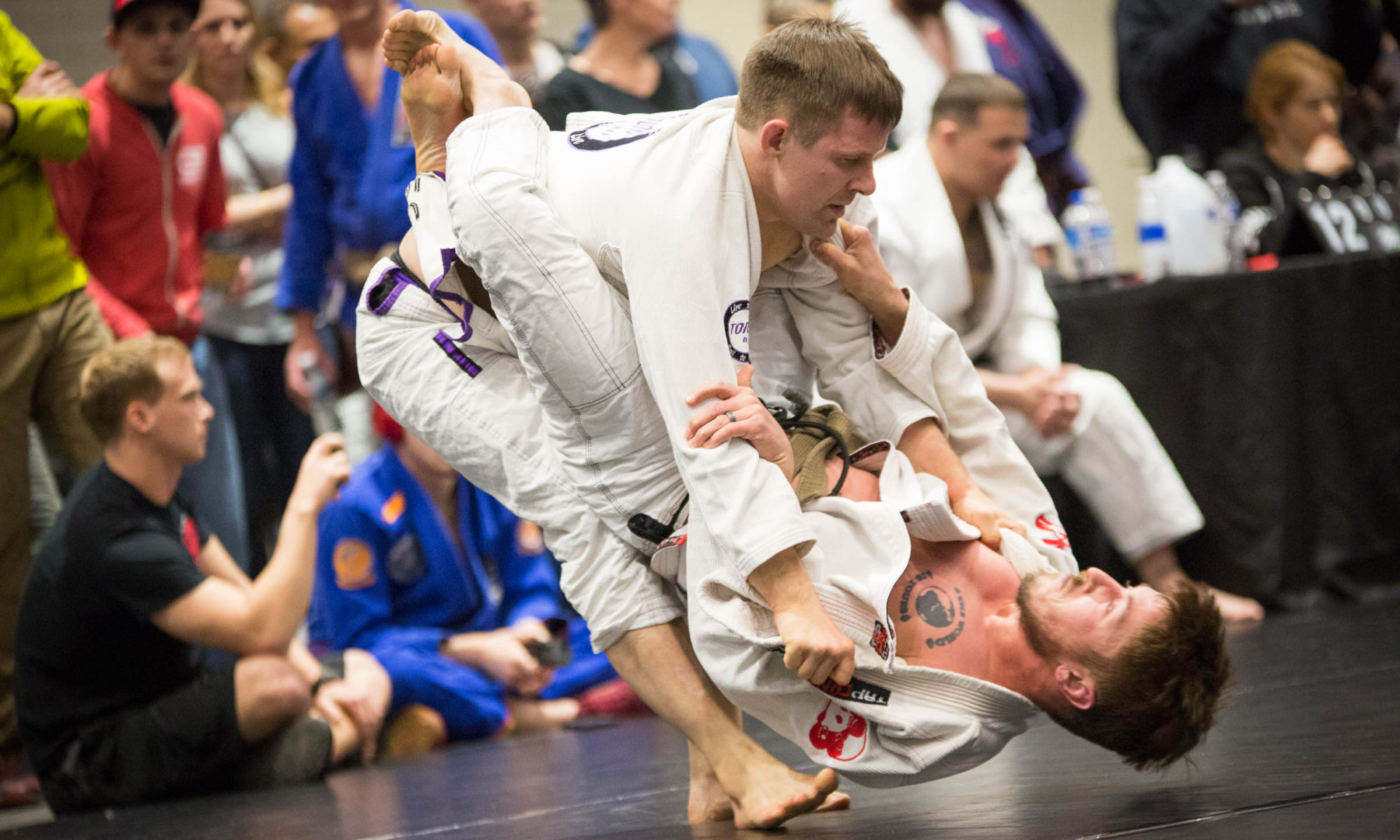“A writer who is afraid to overreach himself is as useless as a general who is afraid to be wrong.” –Raymond Chandler
A new guard comes out every week. It’s remarkable how, after billions of years of evolution and thousands of years of human grappling, completely unforeseen positions somehow crop up every time there are DVDs to be sold.
It’s also interesting how, when a new guard is “created,” we’re treated to marketing efforts that inform us how innovative it is, how cutting edge, how devastatingly effective.
Hyperbole has its value, of course, as the Raymond Chandler quotation from above emphasizes. You’ve got to believe in what you do, and you have to market your instructional. Also, believe you me, I’m going to engage in a little hyperbole, right now.
Here it is: There is no such thing as spider guard.
Or worm guard. Or koala guard, or God help me mantis guard. There is no such thing as any of these.

There is only the guard. And the guard has principles. Every good and useful position within guard adheres to these principles.
Many times, fancy terminology for allegedly innovative positions disguises the fact that these “new” guards have been played for years — or worse, it distracts us from one fundamental concept of good guard play.
Now, obviously I don’t mean “the positions typically described as spider guard positions do not exist.” That’s where my own hyperbole comes in. I want you to consider the idea “there is no such thing as [insert name of guard position]” in terms of a thought experiment.
The positions exist. But when discussing the guard with new students, it’s more helpful to explain to them the concepts of what a good guard means rather than tell them “go straight to this specific guard position that you must use.” When we describe these positions, we should see this terminology as helpful visual shorthand and nothing more.
First, I’ll talk about why the last paragraph I wrote is true. Next, I’ll focus on why understanding the fundamental principles of guard is important. And finally, I’ll talk about what this idea means for those of us who train.
Why Is There No Such Thing As Spider Guard?
When we use the guard, whether in a sport environment or a self-defense situation, there are certain things we must do. Primarily, we must control distance.
If we don’t control distance, we aren’t safe, and if we aren’t safe, nothing else matters. There are a variety of ways we can do this, both in closed guard and open guard. But all of them require us to understand this: we are building structures. Our structures could be a solid closed guard. They could be feet on the hips in proper position. Could be a leg lasso, or any number of things.
The particular structure is less important than the idea that guard is a process of creating our own powerful structures while preventing our opponent’s structures from developing.

In order to build good structures, I have to control the inside space. If I grab my opponent’s arms on the outside of his triceps, he is in a more powerful spot than I am — not to mention that he can punch me. But if I use my hands to make hooks on the inside of his biceps, or if I grab his sleeves and step on his biceps, passing and punching becomes nigh impossible until he breaks my structures down.
“Wait!” You might be saying. “You just said ‘step on the biceps!’ You just said spider guard doesn’t exist, but you’re describing spider guard!”
This is exactly the point I’m trying to make. To achieve the goals of guard, I need to build structures. In order to do this, I need to step on targets. The most powerful targets are typically hips, biceps and shoulders. Why are these most powerful? Because they control the inside space.
Try passing a guard or punching someone without clearing their hands, feet or knees off your biceps. As long as you hit and maintain those targets, your structures are working. You can call that “spider guard,” for sure. But it’s more important, especially early on, to understand why the position we call spider guard works. And that there are other positions in the guard universe that serve the same function.
As Royce Gracie black belt Roy Marsh put it in a conversation with me, “guard is just structures that allow movement which can then build better or new structures.” This is a really important insight — that structures allow movement —for the next section.
Why Is Realizing “There Is No Such Thing As Spider Guard” Important?
Early on in my training, the De La Riva guard made sense to me. It just felt natural. I think certain positions like this pop up for all of us: there’s just this one thing that you gravitate to as a thing you understand and enjoy.
The biggest mistake I made in my early blue belt years: when I got in trouble, I held onto that De La Riva guard like a sinking ship. That changed when I took a private with Vicente Junior, an amazing black belt directly under Ricardo de la Riva.
He gave me an insight that is also reflected in the Roy Marsh dictum above: the guard is about movement and transition. When someone clears your De La Riva hook, you can fight like hell to get it back —or you can transition and step on a hip. When someone stuffs your foot between their legs, you can exhaust yourself trying to get whatever guard you want back — or you can move to Reverse De La Riva.
Jiu-jitsu is about efficiency, and fighting like crazy for specific positions isn’t efficient. If I’ve built a good structure, that structure will allow me to move.

For me, realizing that I wasn’t a De La Riva Guard Player was a key insight. My DLR hook could become a hook elsewhere (inside the lead leg) or hit a target (a hip, a bicep). That way, I control distance. I maintain control of the inside space. I play guard, not “De La Riva guard” or “spider guard.”
I think if we teach new students these core principles as we teach them particular positions, it will be better for their long-term growth. Don’t just “play spider guard,” understand why spider guard works — and what stops it from working. That way if they clear your foot from a target, you aren’t exhausting yourself trying to do exactly that one thing — or worse, totally lost.
What Does All This Mean?
I want to say one other thing about fundamental principles, and then I’ll give the three things I hope you’ll take away from this post. All of these ideas apply to passing the guard too. It’s a game of structures, or building them and breaking them down.
If we have good fundamentals, we can prevent a lot of problem situations. Often, adhering to these core concepts can defeat the so-called “modern” open guard before they get started. One of the things Ze Grapplez did very well in our match this year, and a key reason he won, was that he prevented me from even getting my open guard going.
He did this with sound pressure passing that stopped me from — stop me if you’ve heard this — controlling distance and dominating the inside space. Once he achieved that, I was playing catch-up and I never caught up. If your opponent stops your offense before it gets started, it’s hard to win.
So, to sum up:
1. Fundamental principles are important, and by and large they don’t change: think of targets and hooks and structures, not ultra-specific positions.
2. Thinking of yourself as a Spider Guard Player or a De La Riva Guard Player or whatever it is can blind you to one of the most critical aspects of guard — the ability to move and transition.
3. Don’t always believe the hype about the hot new guard. Close your guard. If it opens, control distance, dominate the inside position, build good structures and keep yourself able to move. Whether you call that open guard, panda guard or Double Secret Probation guard doesn’t matter.
Actually, just call it Dirty White Belt guard. I could use the clicks. Happy training!
